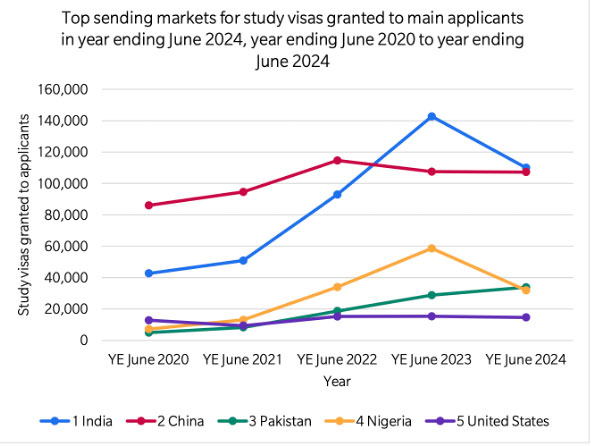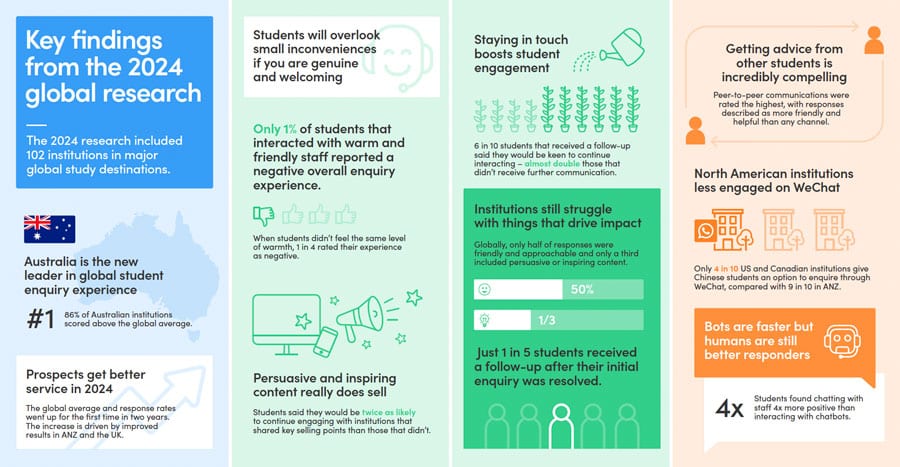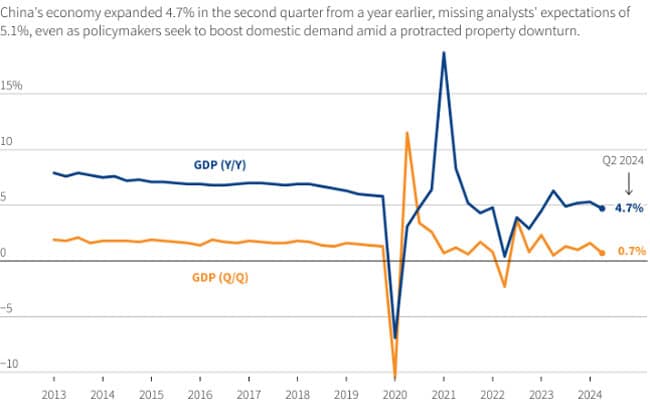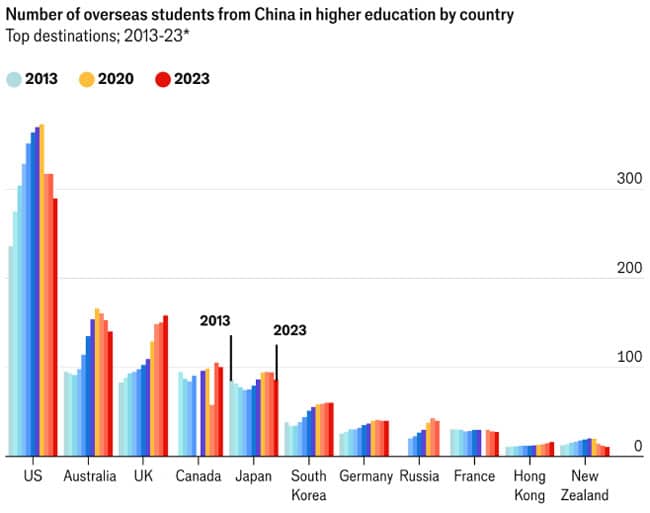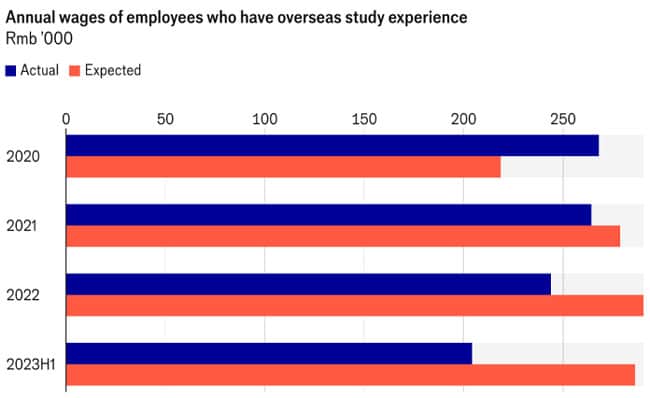On Friday afternoon, 4 October, Immigration, Refugees and Citizenship Canada (IRCC) announced a number of important details for the new rules governing Canada’s post-graduation work permit (PGWP) eligibility. The 4 October update follows the additional restrictions introduced by IRCC on 18 September.
In its latest update, IRCC first confirms that 1 November 2024 is the cut-off date for which the new rules will apply. Students who applied for or held a study permit prior to 1 November 2024 will remain eligible for a PGWP under the previous rules.
Students applying for a study permit on or after 1 November 2024, however, will be affected by the new rules, the most important aspect of which concerns a new “field of study” requirement for graduates of college programmes, including degree programmes.
IRCC explains that as of that 1 November effective date, “If you graduated from a college program or any other program not listed above, you must graduate in an eligible field of study” in order to be eligible for a post-graduation work permit.
Graduates of degree programmes offered by universities are unaffected by the new rules and will continue to be eligible for PGWPs of up to three years, without a field of study requirement.
On the Key question of fields of study for college graduates leading to a PGWP, IRCC’s 4 October announcement provides a detailed list of 966 eligible academic programmes. Crucially, those programmes are confined to five broad areas: agriculture and agri-food; healthcare; science, technology, engineering, and mathematics (STEM); skilled trade; and transportation.
This means, however, that some key areas of college programming that tend to attract significant numbers of international students, such as tourism and hospitality or business programmes of any kind, will no longer be PGWP-eligible. Commenting on LinkedIn shortly after the 4 October announcement, Karen Dancy, director, recruitment and international at Olds College, said, “Notably absent on the list is hospitality. This will be catastrophic for local communities, including rural and remote areas, that rely on our college-educated international learners.”
In an open letter to IRCC Minister Marc Miller on 27 September, Marketa Evans, the president and CEO of Colleges Ontario, registered the sector’s strong objections to the additional restrictions placed on college graduates. “I write to express our strong objection to the federal government’s decision to end automatic work permits for international students attending Ontario’s public colleges,” she said. “We are very concerned about the lack of consultation with provinces and the use of national labour market information to inform what local employers need. We urge the federal government to work collaboratively with the province to ensure that the needs of Ontarians are taken into consideration under this new work permit system.”
The process by which the list of PGWP-eligible programmes remains unclear. But IRCC has previously said that it would be based on areas of long-term labour shortages in the Canadian economy. In a 1 October statement to ICEF Monitor, an IRCC spokesperson added that, “The occupations in long-term shortage on which this policy is based are the same as those used in Express Entry’s category-based selection process,” and that the list of eligible field of studies would be “chosen with input received from our partners, including provinces and territories, and stakeholders across the country.”
Many stakeholders, however, have called that process into question, especially with respect to its ability to recognise or adapt to regional or local labour market needs. A 2 October statement from Pari Johnston, the president & CEO of Colleges and Institutes Canada, makes that very point.
“The reforms single out public colleges to prove their programs align with national labour market needs – determined by Ottawa – in order to be considered an eligible field of study for a post-graduate work permit. New eligibility restrictions also make a false distinction between the quality and relevance of college and university bachelor’s degrees approved by their provinces…Ottawa’s decision to align programs with national needs creates a fundamental disconnect between the pressing needs of local labour markets and the essential contributions of skilled international graduates from the over 10,000 diploma and bachelor’s degree programs in high demand fields across our network. We believe this disconnect needs to be addressed with urgency.”
Scale of impact
The Toronto Star reports that “105,030 post-graduation work permits were approved in the first six months of this year, with 64% of them going to international graduates from colleges. Over the same period, graduates in business studies made up 42% of the work permit recipients while 37% were in STEM and 16% in computing and IT. However, just 1% studied [skilled] trades.”
In other words, more than six in ten PGWPs issued in the first half of 2024 went to college graduates, roughly 67,000 of them. Of those, nearly half would no longer be eligible for post-study work in Canada under IRCC’s new rules.
What happens next
There is no question that IRCC’s 4 October announcement presents a massive challenge to Canadian colleges, and one that will have significant impacts on recruitment strategy and institutional finances.
Writing on LinkedIn on 4 October, Dr Dennis Johnson – formerly the president of the College of New Caledonia and now a consultant in the sector – said that, “The recent policy changes announced by Minister Miller mark a pivotal shift for Canada’s International Student Program, drastically reducing what was once a financial lifeline for many institutions. The future of the post-secondary education system is at risk, and without coordinated action, both the viability of institutions and opportunities for future learners are in question.”
Dr Johnson sees a period of turmoil ahead, with considerable demand for additional funding from provincial governments, but ultimately that these current challenges may also drive innovation within the sector: “I firmly believe that Canadian institutions will use this crisis as an opportunity for improvement, innovation and change. We are likely entering one of the most transformative periods in Canadian post-secondary education in decades, as institutions rethink their business models, improve operations, professionalize management practices, and adapt their priorities and program offerings to align with new realities.”
For additional background, please see:
Source

